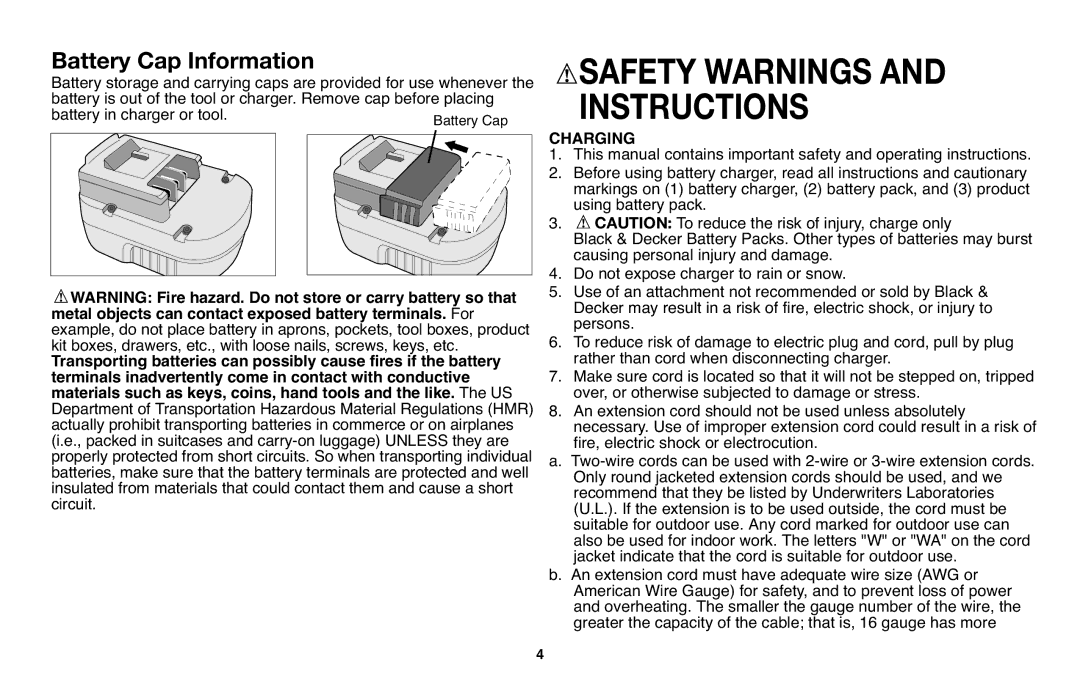
Battery Cap Information |
|
Battery storage and carrying caps are provided for use whenever the | |
battery is out of the tool or charger. Remove cap before placing | |
battery in charger or tool. | Battery Cap |
WARNING: Fire hazard. Do not store or carry battery so that metal objects can contact exposed battery terminals. For example, do not place battery in aprons, pockets, tool boxes, product kit boxes, drawers, etc., with loose nails, screws, keys, etc.
Transporting batteries can possibly cause fires if the battery terminals inadvertently come in contact with conductive materials such as keys, coins, hand tools and the like. The US Department of Transportation Hazardous Material Regulations (HMR) actually prohibit transporting batteries in commerce or on airplanes (i.e., packed in suitcases and
4
 SAFETY WARNINGS AND
SAFETY WARNINGS AND
| INSTRUCTIONS |
CHARGING | |
1. | This manual contains important safety and operating instructions. |
2. | Before using battery charger, read all instructions and cautionary |
| markings on (1) battery charger, (2) battery pack, and (3) product |
3. | using battery pack. |
CAUTION: To reduce the risk of injury, charge only | |
| Black & Decker Battery Packs. Other types of batteries may burst |
4. | causing personal injury and damage. |
Do not expose charger to rain or snow. | |
5. | Use of an attachment not recommended or sold by Black & |
| Decker may result in a risk of fire, electric shock, or injury to |
6. | persons. |
To reduce risk of damage to electric plug and cord, pull by plug | |
7. | rather than cord when disconnecting charger. |
Make sure cord is located so that it will not be stepped on, tripped | |
8. | over, or otherwise subjected to damage or stress. |
An extension cord should not be used unless absolutely | |
| necessary. Use of improper extension cord could result in a risk of |
| fire, electric shock or electrocution. |
a.
b. An extension cord must have adequate wire size (AWG or American Wire Gauge) for safety, and to prevent loss of power and overheating. The smaller the gauge number of the wire, the greater the capacity of the cable; that is, 16 gauge has more
